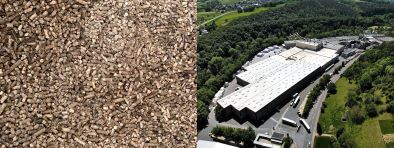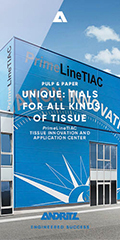
| Archive/Subscribe | TAPPI.org | Advertise | TAPPI Press Catalog | November 2023 |
Metsä Tissue Kreuzau Mill Reduces CO₂ Emissions by Two Thirds
According to the goal of Metsä Tissue, part of Metsä Group, to develop its Future Mill-concept, the company will aim to have fossil free mill fleet by 2030 and accordingly it has stopped using coal as an energy source in its Kreuzau’s mill. Since September 2023 the Kreuzau mill has been replacing the use of fossil-based lignite by wood pellets in the mills heat production. Currently tissue paper production process creates annual emissions of 90,000 t CO2 and by implementing wood pellets instead of lignite, fossil-based CO2 emissions will be reduced by 60,000 t per year, meaning over 30 per cent reduction of CO2 emissions yearly in Metsä Tissue. Through this change Metsä Tissue’s Kreuzau mill compares favorably also with the EU Emissions Trading Scheme (ETS) benchmark as the emission level at Kreuzau mill will be 200 kg CO2/t tissue paper compared to 340 kg CO2/t tissue paper. “With this step we are executing our transition plan towards a fossil-free production by 2030 as well as world-class environmental performance. This transition has been initiated by a simple idea to change fuels, but keeping the existing technical infrastructure. The development work, however, has been extensive. Since beginning of 2022 the shift to wood pellets has been tested, necessary adaptions made and now the shift has been finalized,” says Tobias Lüning, SVP Central Europe, Metsä Tissue. As part of Metsä Tissue’s strategic sustainability goals the company strives to have fully fossil-free production by 2030. The transition to wood pellets in Kreuzau mill supports also German government's phase-out of coal-fired power generation. In addition to this transformation in Kreuzau mill, Metsä Tissue continues to develop towards a sustainable future technologies also in all other mills.
|




